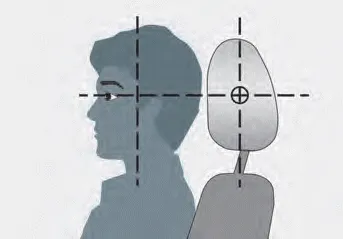Hyundai Elantra (CN7): Seats / Head Restraints
The vehicleŌĆÖs front and rear seats have adjustable head restraints. The head restraints provide comfort for passengers, but more importantly they are designed to help protect passengers from whiplash and other neck and spinal injuries during an accident, especially in a rear impact collision.
WARNING
To reduce the risk of serious injury or death in an accident, take the following precautions when adjusting your head restraints:
- Always properly adjust the head restraints for all passengers BEFORE starting the vehicle.
- NEVER let anyone ride in a seat with the head restraints removed or reversed.

- Adjust the head restraints so the middle of the head restraint is at the same height as the height of the top of the eyes.
- NEVER adjust the head restraint position of the driverŌĆÖs seat when the vehicle is in motion.
- Adjust the head restraint as close to the passengerŌĆÖs head as possible. Do not use a seat cushion that holds the body away from the seatback.
- Make sure the head restraint locks into position after adjusting it.
NOTICE
To prevent damage, NEVER hit or pull on the head restraints.
CAUTION
When there are no occupants in the rear seats, adjust the height of the head restraint to the lowest position. The rear seat head restraint can reduce the visibility of the rear area.
Folding the rear seat The rear seatbacks can be folded to facilitate carrying long items or to increase the luggage capacity of the vehicle. WARNING Never allow passengers to sit on top of the folded down seatback while the vehicle is moving.
Both the driverŌĆÖs and passengerŌĆÖs front seat are equipped with adjustable head restraints for the safety and comfort. Adjusting the height up and down To raise the head restraint: 1.
Other information:
Hyundai Elantra (CN7) 2021-2025 Service Manual: Description and operation
DescriptionSystem OverviewThe System offers the following features:ŌĆō Human / machine interface through a 1-stage button, for terminal switching and engine start.ŌĆō Control of external relays for ACC / IGN1 / IGN2 terminal switching and STARTER, without use of mechanical ignition switch.
Hyundai Elantra (CN7) 2021-2025 Service Manual: Condenser
Components and components location Components Location[General type]1. Condenser[N Line]1. Condenser Repair procedures Inspection1.Check the condenser fins for clogging and damage. If clogged, clean them with water, and blow them with compressed air.
Categories
- Manuals Home
- Hyundai Elantra Owners Manual
- Hyundai Elantra Service Manual
- Body Electrical System
- Heating, Ventilation and Air Conditioning
- Towing
- New on site
- Most important about car
